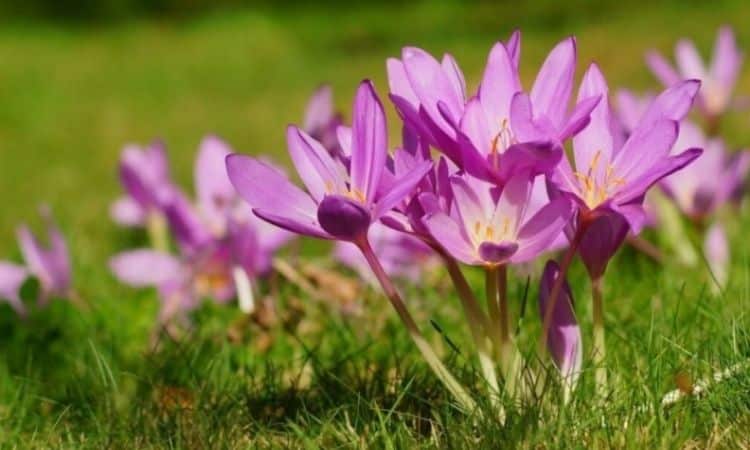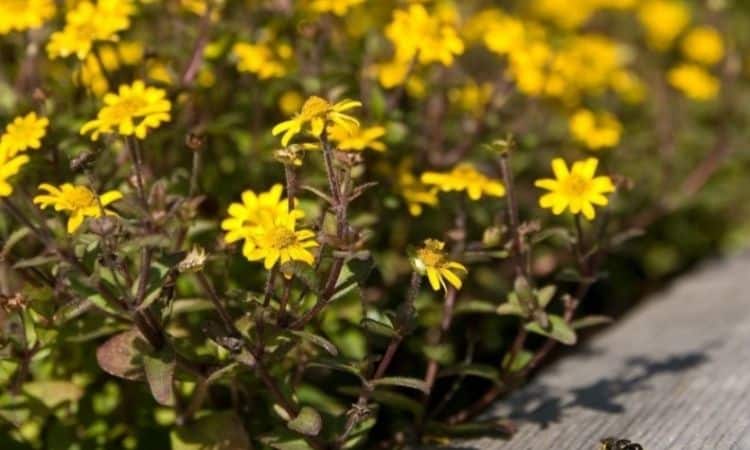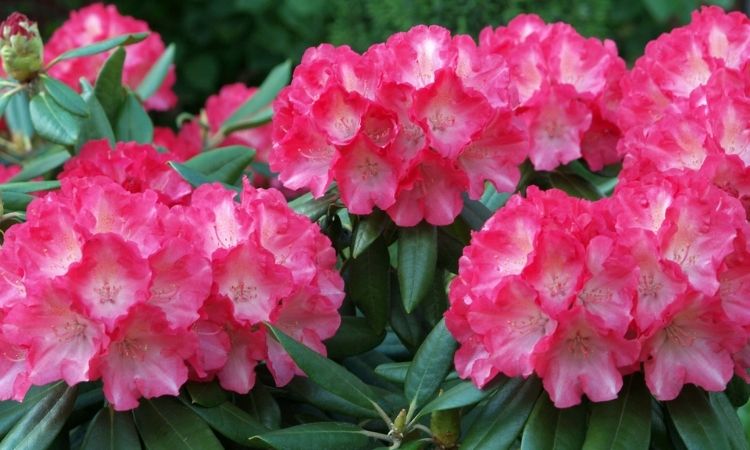Autumn Crocus (Colchicum Autumnale): Leaves Recognize, Toxicity
How do you recognize the Autumn Crocus? Is it also suitable for the garden and what do you have to pay attention to with this pretty plant? You can find out everything about the Colchicum Autumnale here.
When the first leaves fall in early the Autumn Crocus (Colchicum autumnale) adds color to the landscape. The pale violet flowers can then be seen both in open meadows and in light forests, bringing a touch of spring to the landscape as it prepares for winter. But the Autumn Crocus can also be admired as an ornamental plant in your own garden.
But be careful here: the Autumn Timothy is highly poisonous and was even voted “Poisonous Plant of the Year” in 2010. Further interesting facts and tips for dealing with the timeless plant can be found here.
Autumn Crocus: Origin And Characteristics
Table of Contents
The Autumn Crocus belongs to the family of timeless plants (Colchicaceae) and is probably the best-known species in our country. The plant is found in large parts of Southern and Central Europe. While the leaves and seeds of the timothy are not visible until spring, the flowers appear in late summer or autumn.
The bare, six-petalled flowers are also called “naked ladies”. Up to five flowers are formed per plant, which stands together in a close group on the surface. The flowering time is from August to October. The flower height of the Autumn Crocus is 15 to 20 cm.

After the winter the plant forms its up to 30 cm high leaves. These are broad and elongated, quite thick-walled, and slightly convex at the tip. Special care is needed when looking for wild garlic in spring because there are great similarities. However, wild garlic leaves are much thinner, often a little limp, and smell strongly of garlic.
Inside the funnel of leaves, egg-shaped capsule fruits form in spring, in which the seeds of the autumn crocus ripen over the summer. In late summer, the fruits then break open and release small, black-brown seeds, which are spread by ants or by the wind.
By the way: the autumn crocus is a geophyte like bulbous plants, i.e. it survives underground in a storage organ. In contrast to tulips, chessflowers, imperial crowns, and ornamental garlic, the survival organ of the meadow saffron is botanically speaking not an onion but a tuber formed by a thickening of the shoot.
Are Autumn Crocuses Poisonous?
All components of the autumn crocus are highly poisonous. Consuming the leaves, tubers, flowers or seeds can, in the worst case, lead to death. Although no direct poisoning is to be expected if they are only touched, wear gloves for safety reasons and avoid contact with the mouth.
Autumn crocuses pose a particular danger to children when they play with plant parts. Typical symptoms of poisoning are nausea, vomiting, circulatory failure, or respiratory paralysis. The content of the toxin colchicine increases as the seeds mature and are highest in the seeds themselves. Just a few grams can kill an adult human being.

Hint: Even if autumn crocus is poisonous for us, they are gladly approached by bees and other pollinators and are therefore ideal energy suppliers in the late season. However, if you are afraid for your children or animals and therefore want to drive the poisonous plants out of the garden, it is a good idea to harvest the leaves completely in May. Without these energy suppliers, the tuber dies and can no longer form again the next year. Always wear gloves during this procedure.
Autumn Crocus: What Is The Difference?
Seasonless plants and crocuses look very similar and especially with autumn crocuses there is a danger of confusion. Unfortunately, the distinction is not that easy and requires a good eye. Autumn crocuses have six stamens and crocuses only three, which is easy to see if you look closely. Also, the tubers of the Herbstzeitlose are twice as large as crocus bulbs, but since these plant parts are underground, this differentiation is more difficult.
Autumn Crocus One’s Plant And Maintain
Those who still want to admire flowers in their garden in the late year can also plant autumn crocus in their own garden. For this purpose, there are, besides the wild form, also white and pink cultivated forms, such as the filled hybrid variety ‘Waterlily’, which is also called water lily fall timeless.

The autumn crocus can be planted in the ground between July and August and prefers sunny, wind-protected, and humid locations. In its natural habitat, autumn crocus likes to grow between grasses, which explains its tall, tubular flower stalk.
They feel very comfortable both in sunny open spaces and on the edges of sunny trees and shrubs. The soil should be fresh to moist and nutrient-rich, sandy loamy soils are ideal. Colchicum autumnale loves lime and grows very well on alkaline soils.
In order to make them look good, no more than 5 – 9 plants should be planted per square meter, which gives a planting distance of about 30 – 40 cm. Place the tubers at least 10 cm deep into the ground, otherwise, they will easily suffer from drought. Autumn crocuses also multiply by daughter tubers, which can create a whole carpet of plants in a rarely mowed meadow or bed.
Tip: In addition to the species native to our country, there are many more worldwide. Colchicum bornmuelleri or Colchicum speciosum can also move into our gardens, which stand somewhat firmer but remain lower. C. bornmuelleri produces larger, fuller flowers than C. autumnal. C. speciosum blooms white to dark purple and is also very large.

Use Of Autumn Crocus
Although colchicine is highly toxic, the substance is used to make medicines. It is mainly extracted from the seeds of the autumn crocus and is used, for example, in the treatment of gout. Colchicine is also used in plant breeding. The substance interrupts an important step in cell division and can therefore be used to multiply the chromosome set of a plant.
Autumn Crocus In Hay: Why It Is Danger For Horses
Autumn crocus is as poisonous to animals as it is to humans. Especially the leaves can therefore cause problems in hay because the poison is still effective even when dried. If the plant constituents are ingested with the feed, horses can experience a number of symptoms of poisoning, such as colic, cramps, sweating, and circulatory problems.
You Might Also Like Are Hydrangeas Poisonous to Humans?






